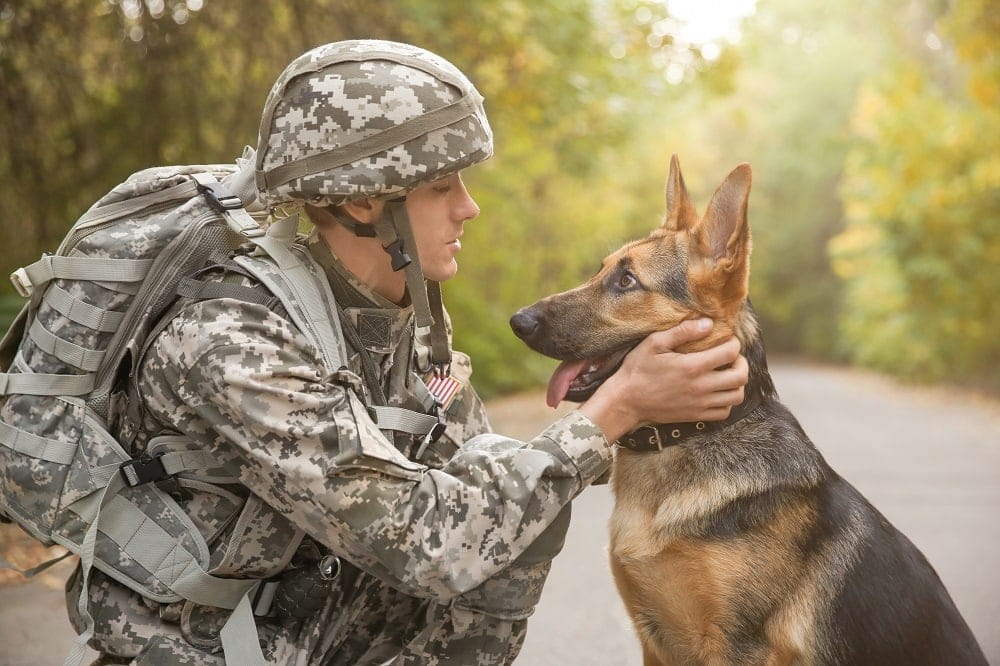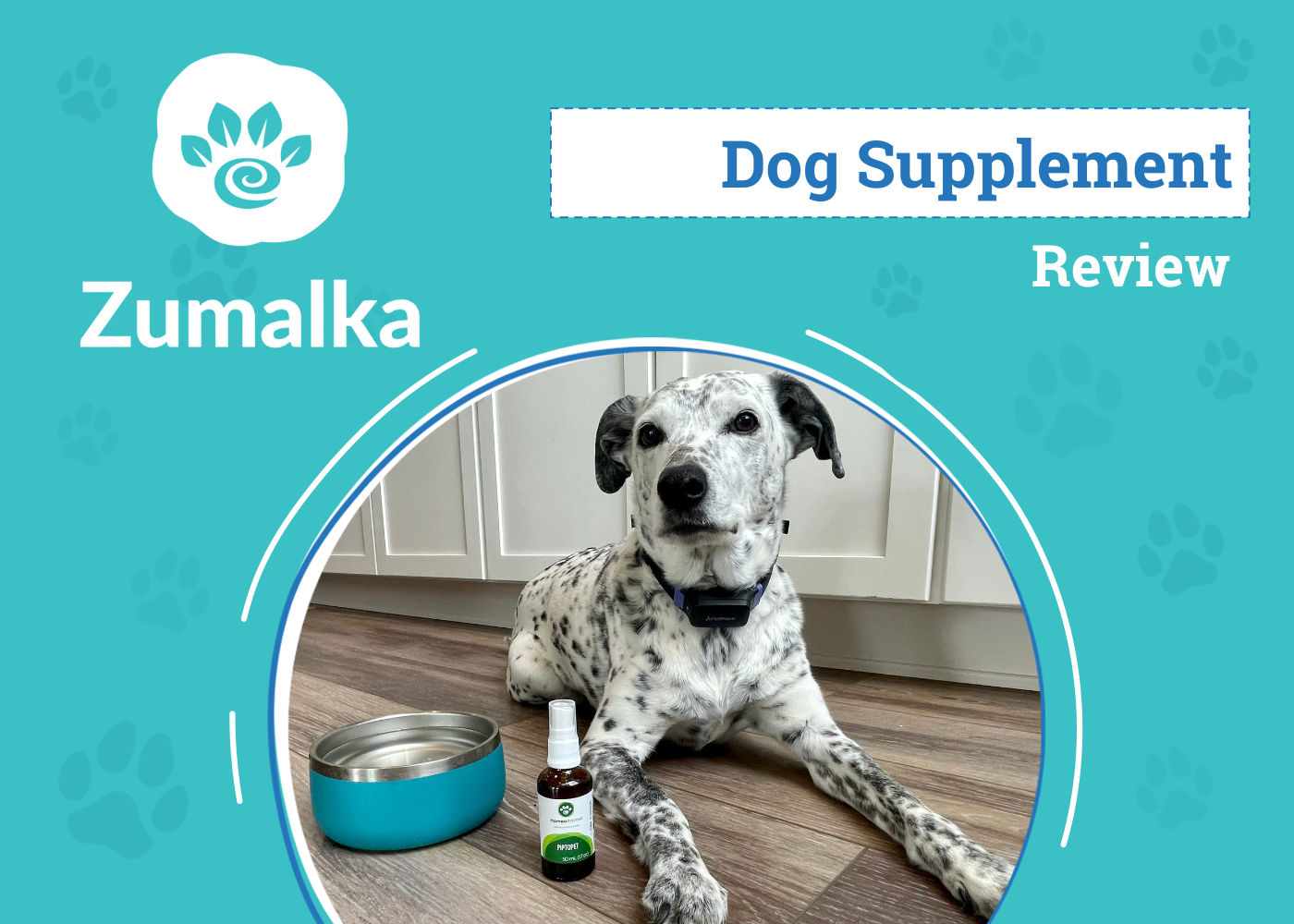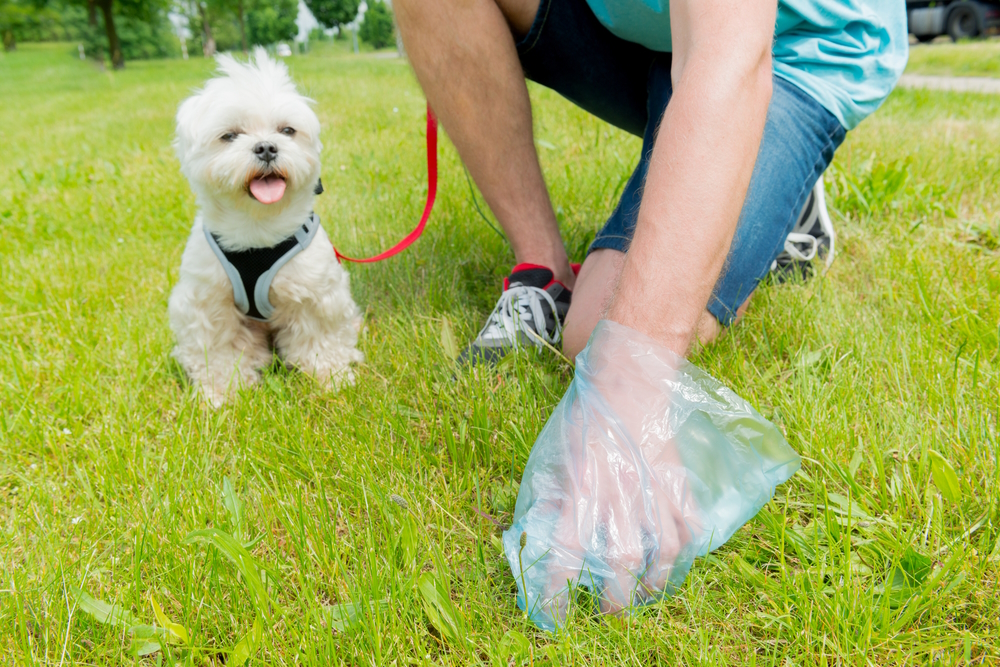The Maltipoo is a healthy dog breed that can have a long lifespan of 12–15 years. However, they are still prone to several issues that you should look out for so you can react quickly to keep your pet healthy. While the Maltipoo is a newer designer breed, their parents, the Maltese and Poodle, have long histories, and vets and breeders are familiar with their health problems, including any inheritable ones. Keep reading as we list the most common problems facing the Maltipoo breed and the symptoms that accompany each, so you can be better informed.
The 10 Maltipoo Health Issues to Look Out For
1. Shaker Syndrome
| Contributing parent: | Maltese, Poodle |
Shaker syndrome is a condition that causes tremors in the dog’s body and head. Many people call it the “little white shaker syndrome” because it is common in small white dog breeds, like the Maltese parent of the Maltipoo, as well as the Poodle.
Shaker Syndrome Symptoms and Treatment
Dogs with shaker syndrome¹ usually begin experiencing tremors in early adulthood, usually by 2 years of age. The involuntary muscle movements look like shaking and might occur in one body part or the entire body. The shaking will usually worsen when the dog gets excited or is active, and the symptoms will lessen when the dog relaxes or sleeps. Most dogs recover after a few weeks of treatment.

2. Dental Issues
| Contributing parent: | Maltese, Poodle |
Dental issues are extremely common in dogs, including both the Maltese and Poodle parents of the Maltipoo. In fact, studies suggest that more than 80% of dogs¹ over 3 years old already suffer from the disease.
Dental Issue Symptoms and Treatment
Unfortunately, there are usually no signs of dental disease before it gets out of hand and it starts affecting the bone. The best option is to have your pet checked regularly. Manually brushing your dog’s teeth is also effective and quite easy if you start when your Maltipoo is still a puppy. Crunchy dry dog food is also good at cleaning the teeth and helping to reduce the progression of dental disease¹.
3. Portosystemic Shunts
| Contributing parent: | Maltese |
A portosystemic shunt¹ is a condition where there is a connection between the portal vein and one of its branches that enables blood to bypass the kidney. This condition is usually the result of a congenital disability, but other problems like a damaged liver can also cause it.
Portosystemic Shunt Symptoms and Treatment
If your dog is experiencing stunted growth, head pressing, staring off into space, and disorientation, your pet might be suffering from a portosystemic shunt. However, some pets won’t show symptoms until they age and develop urinary problems like recurring kidney stones. Special medication and a diet change can help stabilize your pet.
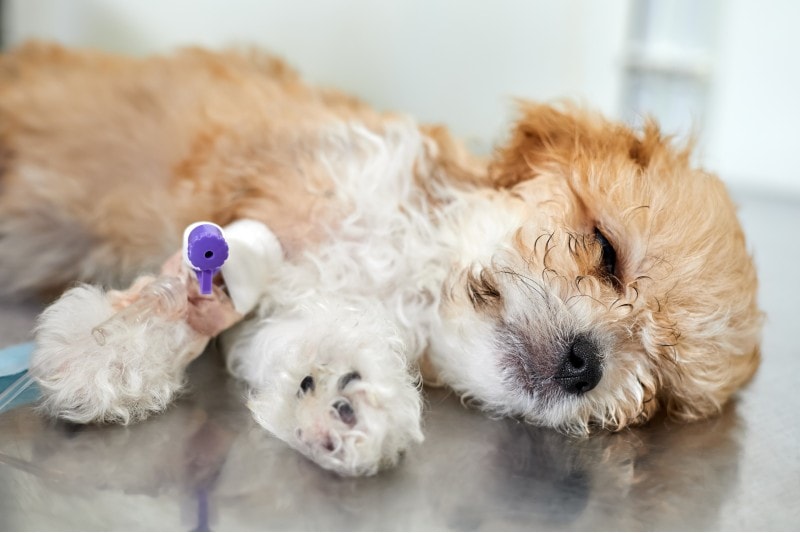
4. Corneal Ulcer
| Contributing parent: | Maltese |
A corneal ulcer is a condition that causes the wearing away of the thin transparent lenses of the cornea. Fluid can accumulate, giving the eye a cloudy appearance that makes the condition easy to identify. If the disease progresses too far, the liquid in the eye can leak out, causing irreparable eye damage.
Corneal Ulcer Symptoms and Treatment
Corneal ulcers¹ are painful, so you will likely see a change in your pet’s behavior. You will also likely notice the eye becoming cloudy as the condition progresses. If caught early enough, treatment can include medication and antibiotic drops.
5. Necrotizing Meningoencephalitis
| Contributing parent | Maltese |
Necrotizing meningoencephalitis is a condition that causes inflammation of the central nervous syndrome, which causes the swelling of the tissue surrounding it, including the brain. It’s more common in smaller dogs, like the Maltese, than larger breeds.
Necrotizing Meningoencephalitis Symptoms and Treatment
Unfortunately, necrotizing meningoencephalitis¹ can progress quickly, leading to death within a few months. Treatment includes medication and supportive care.

6. Bloat
| Contributing parent: | Poodle |
Bloat is a condition where gases stretch the stomach, causing pain. As it expands, it can cut off blood flow to other organs. Sometimes, the stomach can flip on itself, damaging the lining.
Bloat Symptoms and Treatment
If you notice your dog experiencing dry heaves without vomiting, guarding their belly, panting and drooling, collapsing, or having pale gums, it’s important to take your dog to the vet immediately. Bloat¹ is an emergency; if left untreated, your dog can die within a few hours. Fast action often results in complete recovery.
7. Luxating Patella
| Contributing parent: | Poodle |
A luxating patella is a condition that causes your dog’s kneecap to move out of position. As the condition progresses to more advanced stages, the kneecap will come out of position more frequently, and it can start causing chronic pain.
Luxating Patella Symptoms and Treatment
Symptoms of a luxating patella¹ include a limp that comes and goes, a hunched lower back, a cracking or popping sound when your dog bends their knee, and a bowlegged stance in the hind limbs. Treatment can include anti-inflammatory medications, weight loss, and surgery.
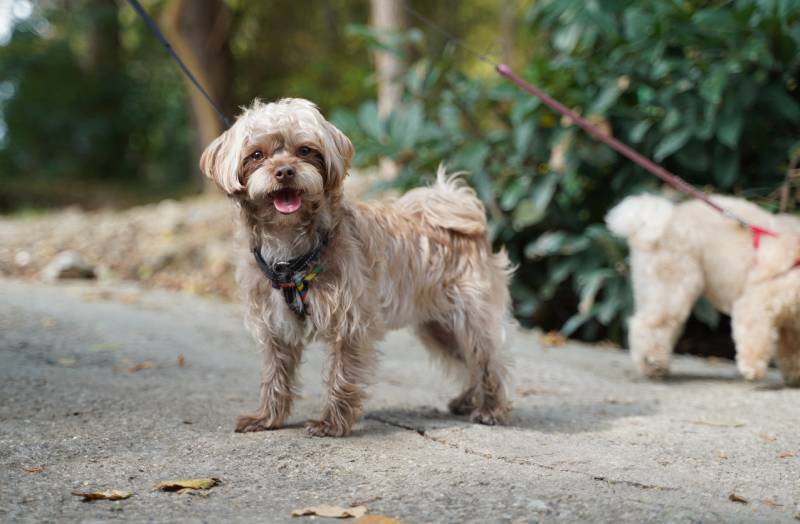
8. Addison’s Disease
| Contributing parent: | Poodle |
Addison’s disease is a condition that causes the adrenal gland to stop producing important hormones, including steroids that regulate your pet’s internal organs and body systems. If not treated, the dog’s body can deteriorate and even die.
Addison’s Disease Symptoms and Treatment
Symptoms of Addison’s disease¹ include depression, weight loss, lethargy, bloody stools, dehydration, shaking, and increased urination. Treatment often requires temporary hospitalization to resolve the emergency crisis, followed by hormone replacement medication that typically works quite well.
9. Hip Dysplasia
| Contributing parent: | Poodle |
Hip dysplasia is a common problem in many dogs, including the Poodle. A malformed hip joint at birth is often the culprit, and the joint continues to wear away at an advanced rate, leading to more problems as the dog ages. It causes pain and difficulty with mobility.
Hip Dysplasia Symptoms and Treatment
Hip dysplasia¹ symptoms include difficulty getting up from a resting position, abnormal sitting positions, difficulty traveling upstairs, bunny hopping while running, and cracking and popping sounds from the joints. Treatment can include weight management and physical therapy.
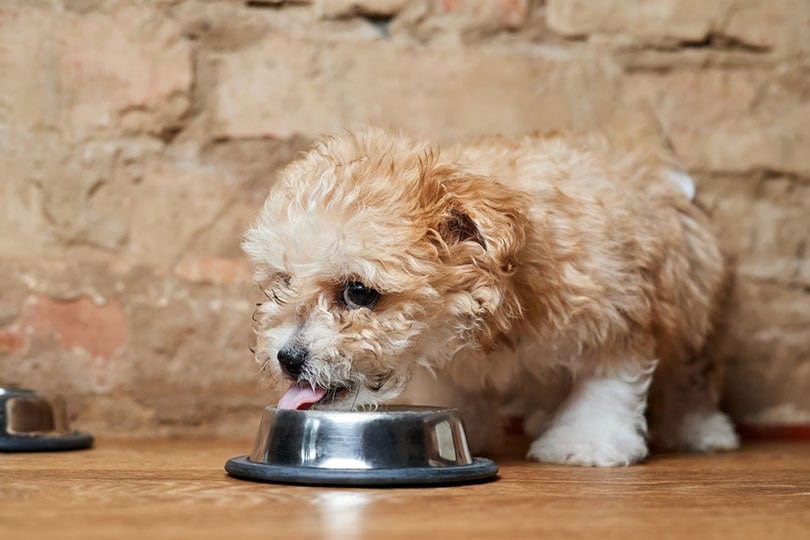
10. Obesity
| Contributing parent: | Maltese, Poodle |
Obesity is a common problem for many dog breeds, including the Poodle and Maltese parents of the Maltipoo, and reports suggest that more than 40% of dogs¹ aged 5–11 weigh more than they should. Obesity can lead to several other health issues, including heart problems, many kinds of cancer, and diabetes.
Obesity symptoms and treatment
Your dog is considered obese¹ when it’s difficult to feel their ribs and fat is visible near the tail. Your dog will likely also become lazy and spend more time lying around the house instead of playing. Treatment includes increasing exercise, paying more attention to dietary guidelines, and discussing healthy options with your vet, since reducing their food intake too much can lead to malnutrition.
 Closing Thoughts
Closing Thoughts
While this list can make it seem like the Maltipoo is an unhealthy breed, these dogs have an average lifespan of about 13.5 years. Obesity and dental issues are both preventable but can cause serious problems if left untreated. Other issues, like shaker syndrome and hip dysplasia, can occur, but they are rare in general, and good breeding makes them even less frequent.
Featured Image Credit: marketlan, Shutterstock

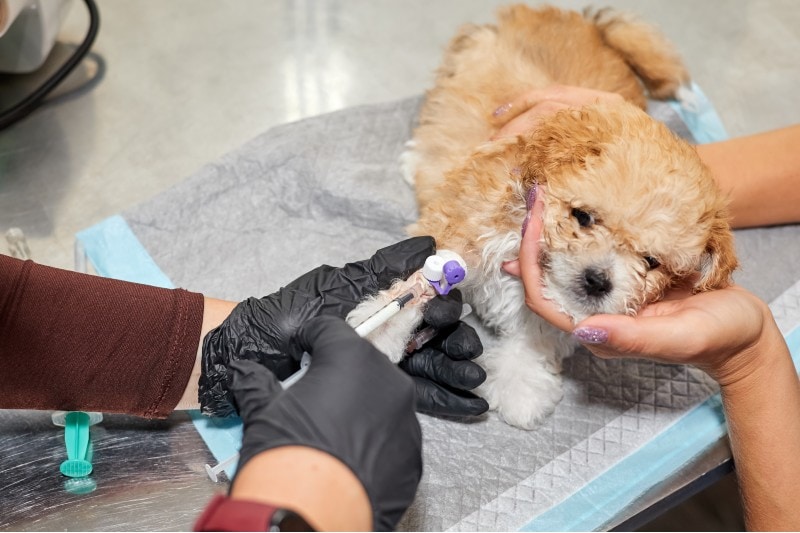
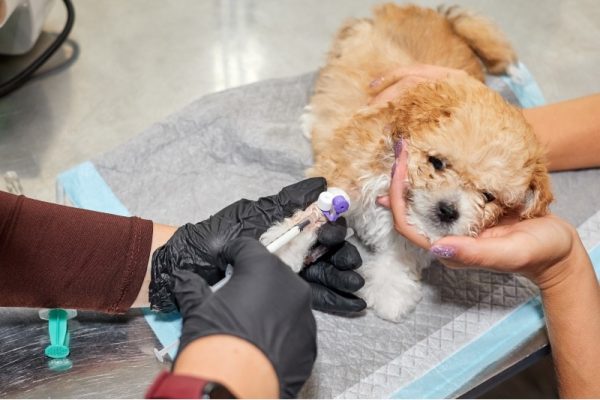

 Closing Thoughts
Closing Thoughts
